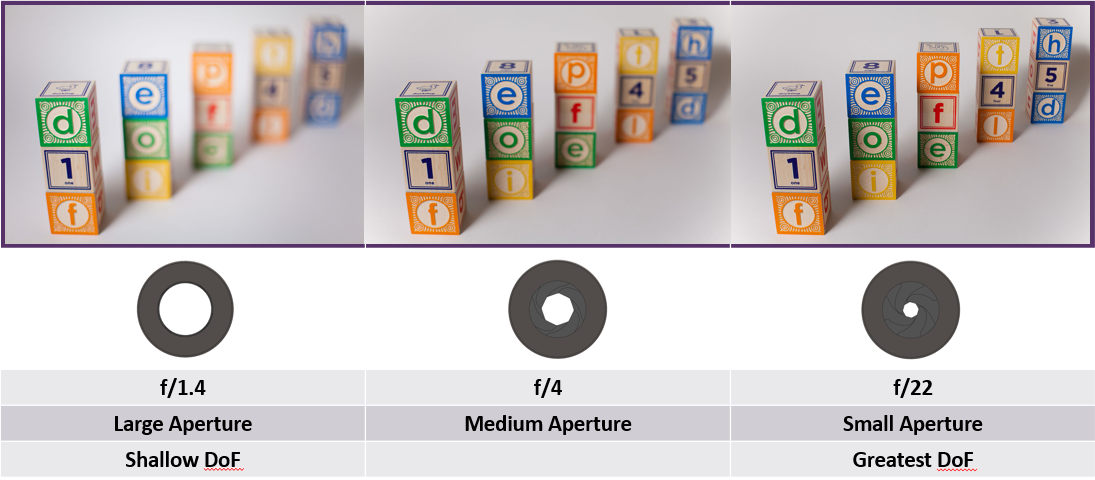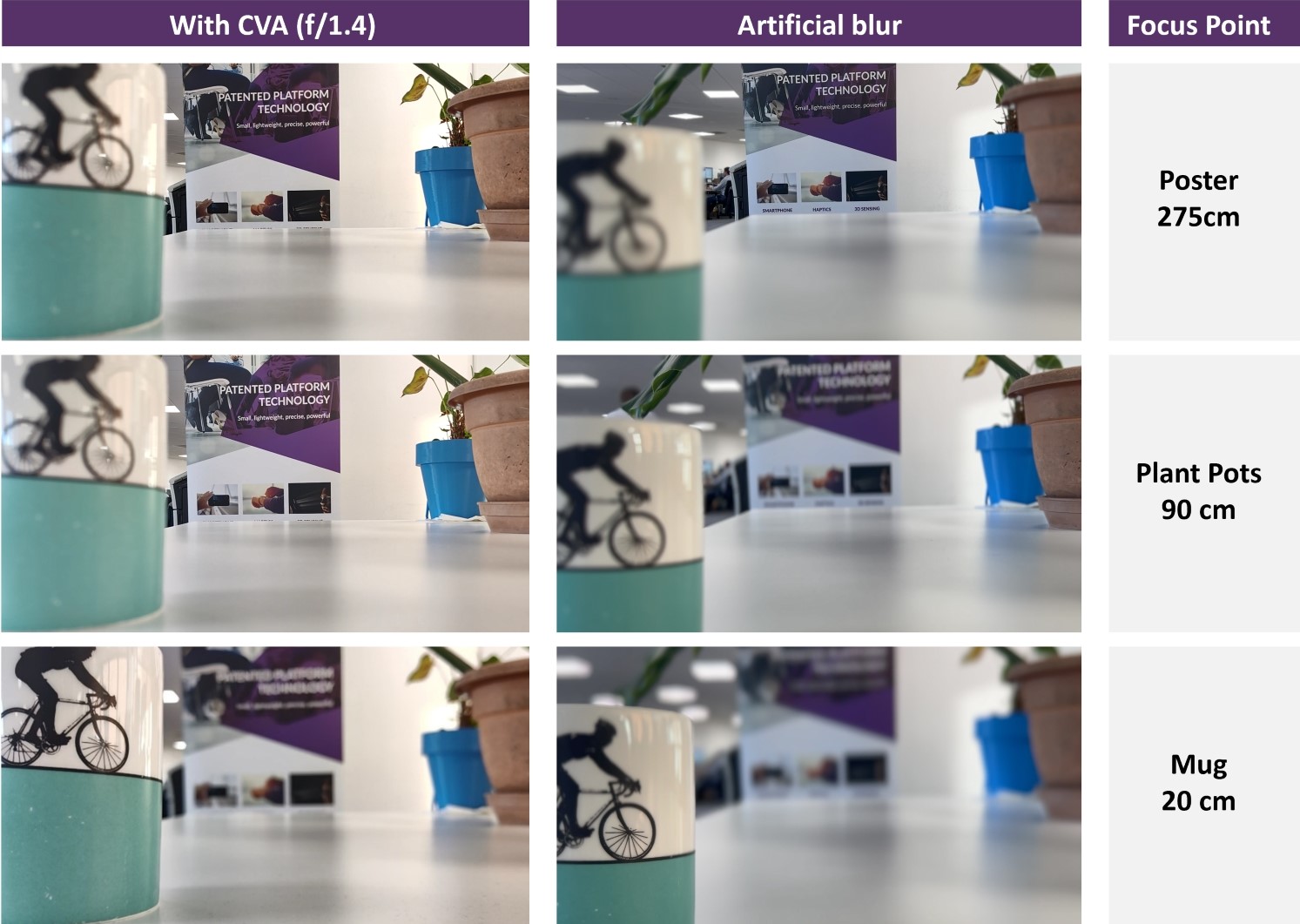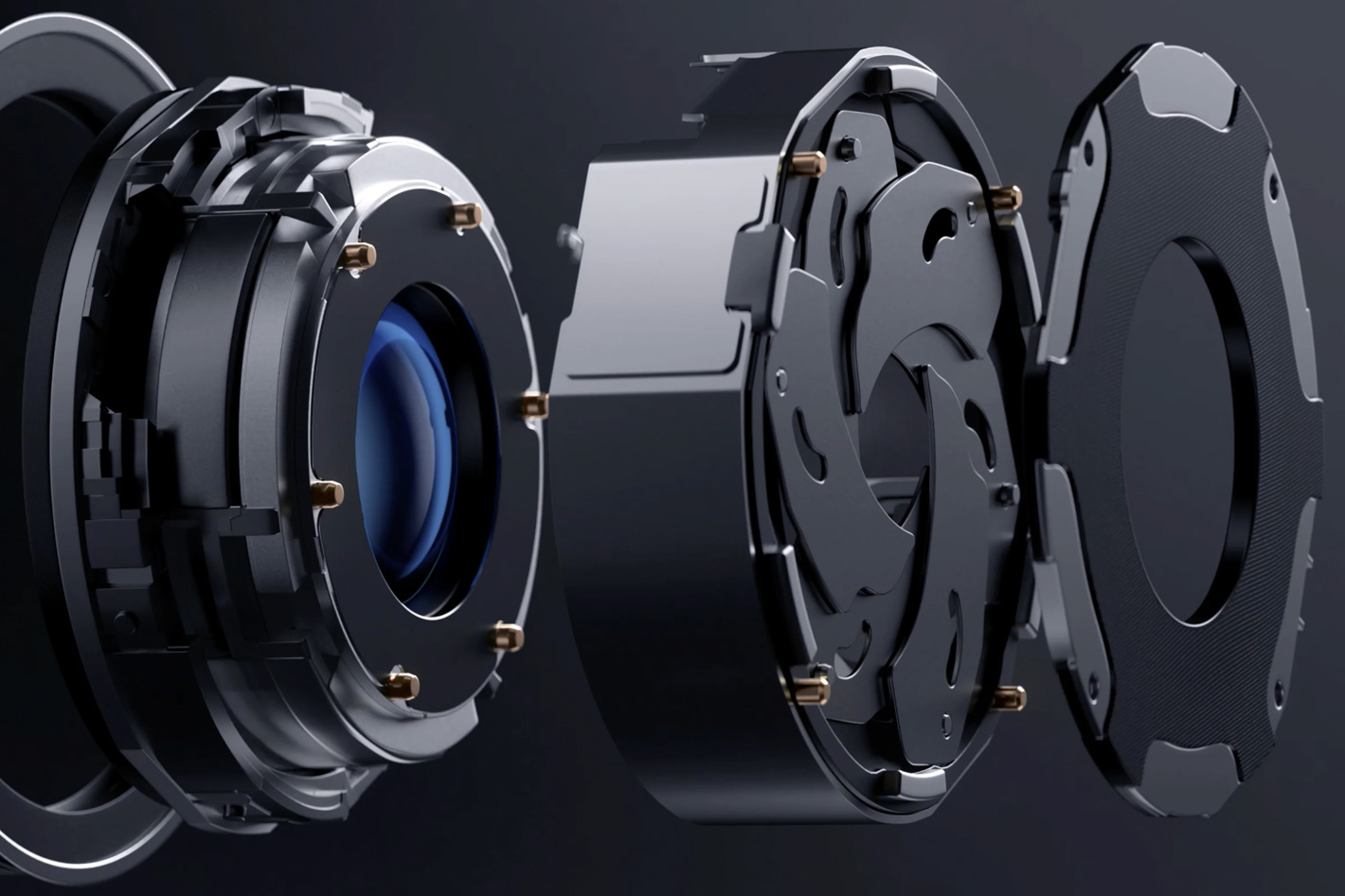8 Sep 2023
Introducing Variable Aperture in smartphone cameras
By Steve Bunting, Staff Engineer
Early mobile and smartphone cameras typically paired small image sensors with small lenses and featured small apertures. Images, especially in dim environments, were often grainy and lacked clarity due to sensor noise that arose when the camera settings tried to make up for insufficient light. To cater to the surging demand for superior low-light performance, the industry shifted toward adopting bigger image sensors and correspondingly, wider lenses featuring larger apertures. This design choice facilitates greater light absorption, producing better quality images in low light. However, large lens apertures can cause compromises in picture and video quality when taking images in well-lit conditions.
Most lens systems in SLR or mirrorless cameras come with a variable aperture (or iris) which is usually constructed as a multi-leaf diaphragm. Until recently, miniature smartphone cameras predominantly offered a single aperture setting. This solitary aperture struck a balance between a large aperture for light capture and sufficiently small for usable depth of field. As cameras became bigger and lens quality improved an aperture was selected from a range that delivered the best-quality image. The aperture selection hinged on the balance between a desire for more light intake (aiding low-light photography) and the aspiration to maintain sharpness across the frame. The pronounced emphasis on better low-light imagery in smartphones with larger image sensors has led to a gradual reduction in F# values, which is impacting the Depth of Field (DoF).
Aperture impact on Depth of Field and light intake
The camera's DoF is the distance range wherein objects retain sharp focus, as highlighted in the figure below. A smaller aperture increases the depth of field, that is, more of the scene appears in focus and the overall information content of the image increases as explained in the image below. As apertures increase, they lead to a diminished DoF. In situations where one desires an extended region of the photo to be sharp—to have every block in focus—a smaller aperture is ideal.
 Image source: Wikipedia
Image source: Wikipedia
The aperture is defined by the ratio of the hole's diameter to the lens's effective focal length. A lens with a 6mm focal length and an aperture that has a 3mm diameter hole would be characterized as having an F-number (F#) of 2 (f/2.0). The degree of out-of-focus blur is given by: aperture diameter x Effective Focal Length (EFL) / pixel size. For a larger sensor size and corresponding larger aperture, with reduced pixel size, the pixel blur can easily increase by 10-20x.
The amount of light that enters the camera is proportional to the square of the aperture diameter. In DSLRs, the aperture typically varies from f/1.5 (large aperture) to f/22 (small aperture) Here, [22/1.5]2 results in ~200x less light collected. The size of the aperture not only scales with the F#, but also with the size of the camera, so a camera that is twice the size will collect 4x more light.
Variable apertures in smartphone cameras
With the increase in lens and sensor dimensions, offering a fixed aperture or dual choice between large or small aperture no longer suffices to maintain both image quality and photographic creativity. A lens accompanying a 1” image sensor, for instance, is better served with a Continuous Variable Aperture (CVA), capable of presenting a spectrum of at least four distinct aperture settings. This ensures superior image fidelity and gives photographers broader creative options.
In compact smartphone camera systems, the aperture is placed at the lens entrance, moving with the lens. Consequently, as the lens (and aperture) are moved for autofocus and image stabilisation, the aperture weight and dimensions are paramount considerations.
Smartphone Camera Depth of Field & Bokeh
Controlling the depth of field through aperture control allows the photographer to select areas of a scene to appear blurred. In smartphones without a CVA, this is achieved through artificial software blurring known as Bokeh that the user does not control. The following images are frames from a video taken on flagship smartphones, one with CVA (left column) and the other without a CVA (right column with artificial blur).

Even with the large aperture f/1.4 setting in the camera with CVA, a large DoF is maintained whether the focal point is at 275cm or 90cm. The camera without CVA is relying on artificial bokeh to create intentional blurring. When comparing the blurring effects on the mug, there is an error in the camera without CVA – the cyclist’s head is blurred despite being at the same DoF as the wheel. No such error is seen on the left, as blurring is created optically, not through software interpolations. Using a CVA allows user control over the depth of field and blurring and is not limited by artificial blur settings.
Conclusion
In small cameras, low-light conditions require digital gain to brighten the image resulting in pixel noise and a grainy image. We have shown that for larger cameras a choice of aperture for optimal image quality boils down to two factors: letting in more light with larger apertures or achieving a more extensive depth of field with smaller ones.
Balancing the impact of larger cameras on image quality prompted the introduction of cameras with dual aperture settings, with handset makers emphasizing the benefits of low-light capabilities. Newer models have moved to increase the number of aperture settings using a continuously variable aperture, with independent camera tests corroborating the positive impact on image quality.
Variable aperture offers the ability to optimise low-light image quality and depth of field across varying conditions in mobile photography. By enabling users to switch between aperture sizes, it's possible to harness the benefits of both increased light intake and increased depth of field, ensuring both professionals and casual users can capture their vision, without being impacted by artificial bokeh blurring.
Read more about the Benefits of Continuous Variable Aperture using Shape Memory Alloy.
About CML: Cambridge Mechatronics Limited (CML) is a world-leading developer of mechanical, optical, electrical, silicon and software designs for system-level solutions using its Shape Memory Alloy (SMA) platform technology. Solutions such as ACTUATORS based on SMA wire (as thin as human hair) can be controlled to the accuracy of the wavelength of light. These actuators are particularly suited to applications that require high levels of precision and force, in a fast, compact and lightweight design.
For more details about SMA technology and Cambridge Mechatronics, please GET IN TOUCH.

